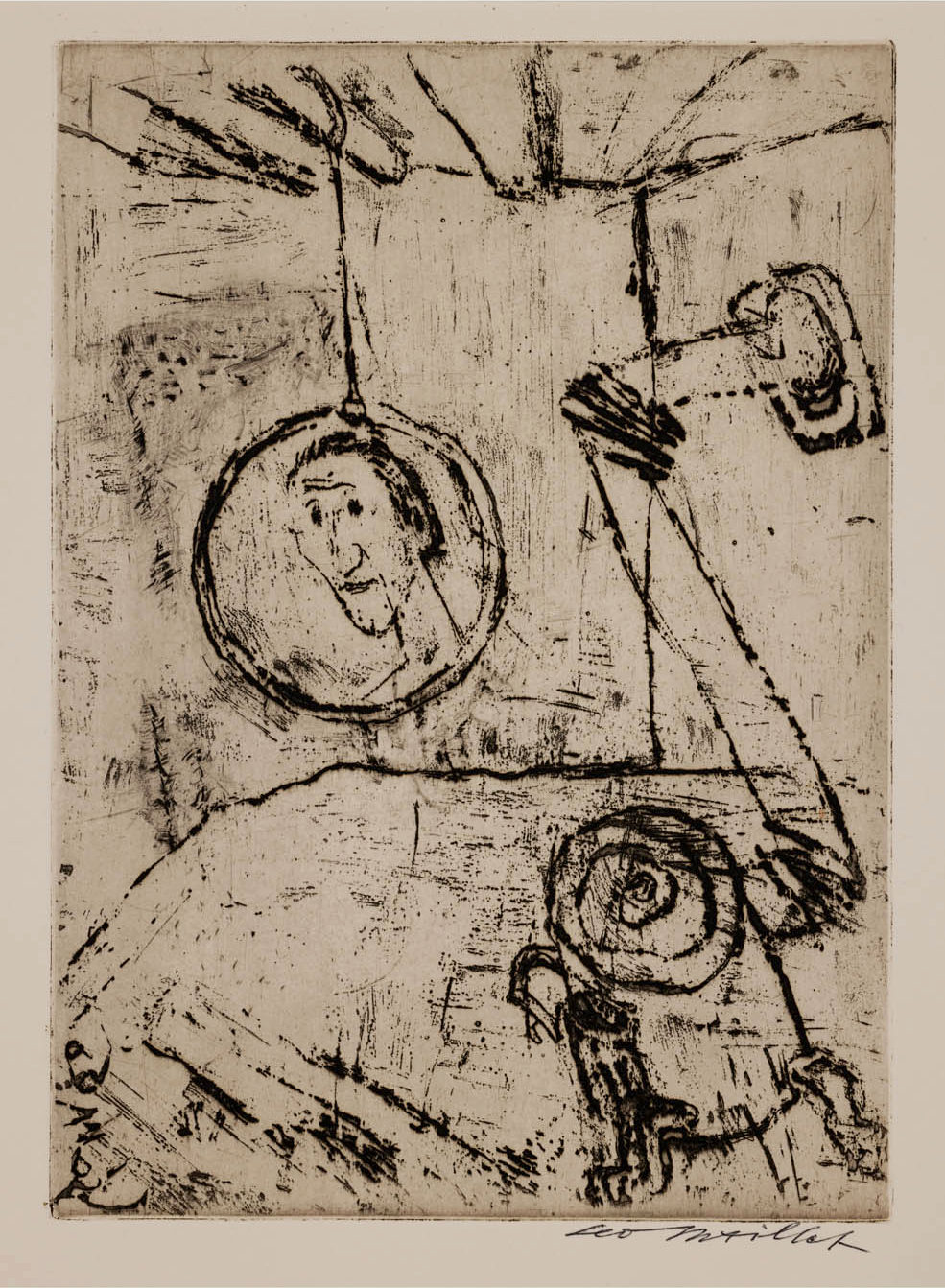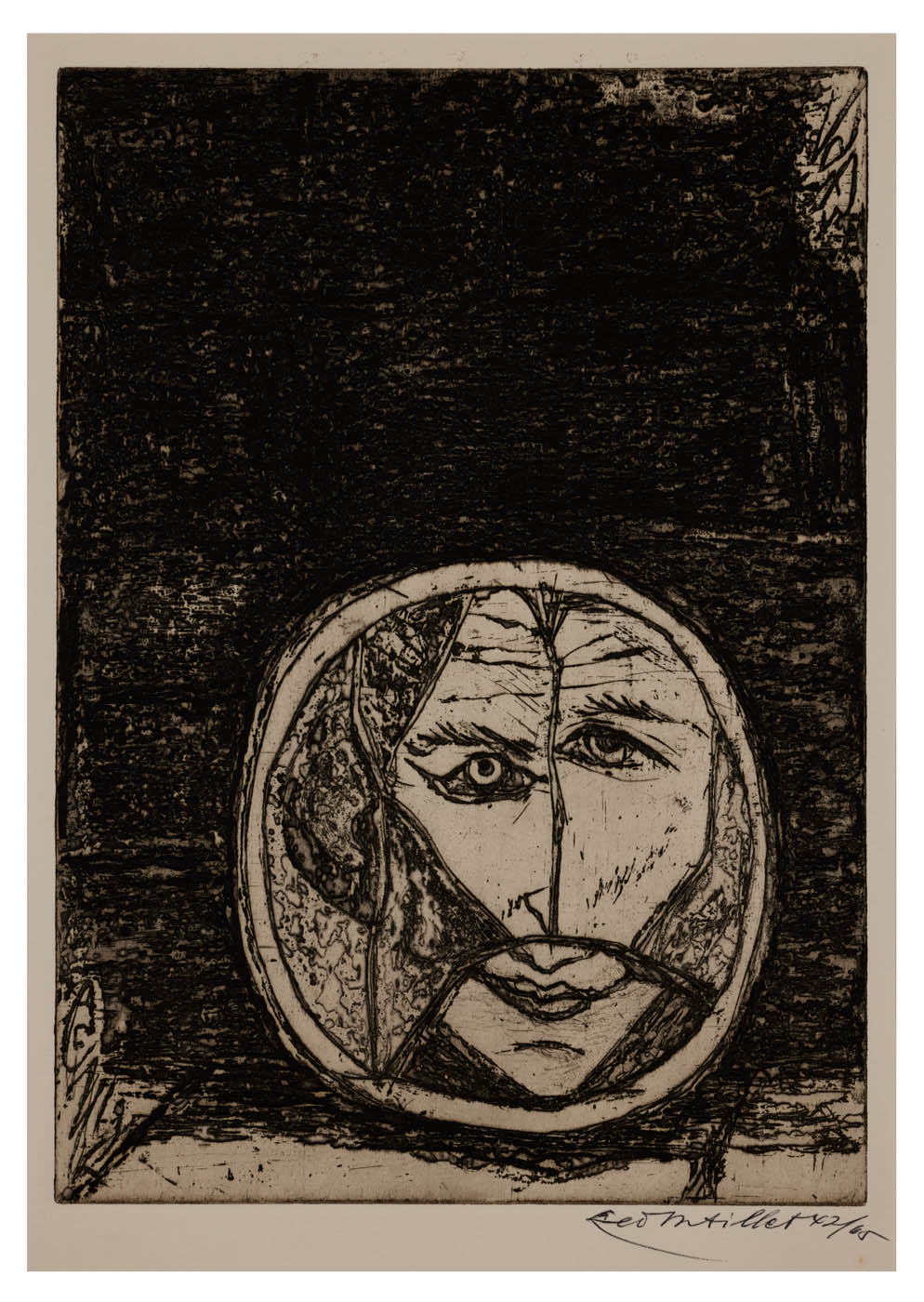

Léo Maillet (1902-1990): The Broken Mirror
Presentation by Erik Riedel, Frankfurt am Main (Germany)
April 9, 2025 @ 12:00 pm - 1:00 pm
| FreeCurator Erik Riedel presents the work of the painter and graphic artist Léo Maillet, who changed his original name Leopold Mayer in exile, reflecting the numerous fractures in his biography.
Image above: Léo Maillet, Le Graveur (Self-Portrait), 1944. Oil on cardboard. Permanent loan by the Adolf und Luisa Haeuser-Stiftung für Kunst und Kulturpflege. © estate of Léo Maillet: Daniel Maillet and Nikolaus Mayer
After his dramatic escape from a deportation train bound for Auschwitz, Maillet lived in the French Cévennes under a false identity from 1942 onwards. He painted and drew with the simplest of materials. Some years later, he took up the works he had created during his flight and persecution and transformed them into paintings and etchings. The resulting works are, on the one hand, artistic reflections of his own work and, on the other, confrontations with his own persecution. The fact that Maillet began the latter just a few years after the end of the war is rather unusual. Both among survivors and in the context of the emerging culture of remembrance, intensive processing of the Shoah only began in the late 1970s.

Léo Maillet, Self-Portrait Looking Upwards, 1928. Oil painting, 80 x 40 cm (destroyed) © estate of Léo Maillet: Daniel Maillet and Nikolaus Mayer

Léo Maillet, Le Graveur (Self-Portrait), 1944. Oil on cardboard. Permanent loan by the Adolf und Luisa Haeuser-Stiftung für Kunst und Kulturpflege. © estate of Léo Maillet: Daniel Maillet and Nikolaus Mayer
Leopold Mayer was born in 1902 in Frankfurt as the only son of the Jewish merchant Eduard Mayer and his wife Betty, née Nathan. After completing a banking and business apprenticeship in a Frankfurt fashion house, he attended the Frankfurt Städelschule academy from 1925 on, where he studied under Franz Karl Dellavilla. In 1930 he was accepted into Max Beckmann’s master class and moved into his own studio at the Städelschule. Due to the unexpected death of his father in 1932 he had to interrupt his art studies and take over his father’s ladies’ hat store. After the Nazis came to power in 1933, he was forced to end his studies and many of his works at the Städelschule were destroyed. When the family business was seized, he decided to leave Germany. In 1935 he emigrated to France; in Paris he worked as a photographer and printer. At the outbreak of war, he was interned as an enemy alien.
After his escape in 1940, he lived in Provence in the unoccupied part of France. In 1942 he was arrested by the Vichy police and interned in the Les Milles and Rivesaltes camps. After escaping from the deportation train to Auschwitz he made his way back to the south of France and eventually lived under a false identity as a shepherd in the Cévennes mountains. With the support of a refugee aid organization, Maillet was able to escape to Switzerland in 1944, where he was interned for six months. After the war he remained in Switzerland where he studied stage design. He finally settled in a small town in Ticino where he died in 1990.

Léo Maillet, Hanged, 1971. Etching after an ink drawing from 1940. © estate of Léo Maillet: Daniel Maillet and Nikolaus Mayer

Léo Maillet, The Broken Mirror, 1971. Etching after an ink drawing from 1944. © estate of Léo Maillet: Daniel Maillet and Nikolaus Mayer
The etching Hanged shows the artist’s portrait in a round mirror hanging from a ceiling beam. The small room is empty except for a stove. Many artists use self-portraits as a medium for self-questioning and self-assurance. This is also the case with Léo Maillet, whose self-portraits created in exile reflect his life as an emigrant under difficult material conditions and increasing persecution. But in numerous self-portraits, Maillet also shows the mirror and the space surrounding it. In this way, he not only addresses the actual circumstances under which the self-portrait is created, but also the act of seeing and drawing itself, which is explicitly made visible here as self-observation.
Erik Riedel is head of exhibitions at the Jewish Museum Frankfurt and curator of the museum’s Ludwig Meidner Archive. The archive consists of the artistic estates of Ludwig and Else Meidner and several other artists who were forced into exile. Erik Riedel has curated numerous exhibitions on 19th- and 20th-century art, for instance on Moritz Daniel Oppenheim, Ludwig and Else Meidner, Charlotte Salomon, and Arie Goral. Apart from several exhibitions catalogues he has published the catalogue raisonné of Ludwig Meidner’s sketchbooks and the conference proceedings “Ludwig Meidner. Expressionism, Ecstasy, Exile” (2018), as well as the catalogue raisonné of Ludwig Meidner’s paintings until 1927 (2023).
A special exhibition with works by Léo Maillet (1902–1990) is on view until November 16, 2025 in the “Art and Exile” room on the third floor of the permanent exhibition in the Rothschild Palace of the Jewish Museum Frankfurt (Germany).
Maillet’s sons created a website with much information about the art and biography of their father:


